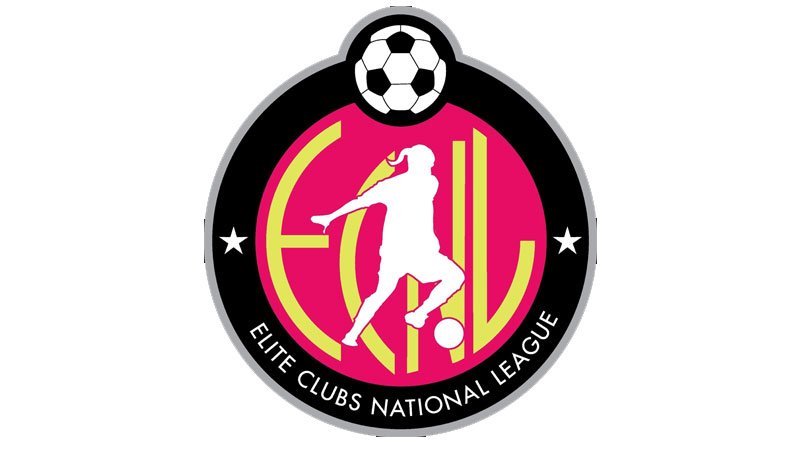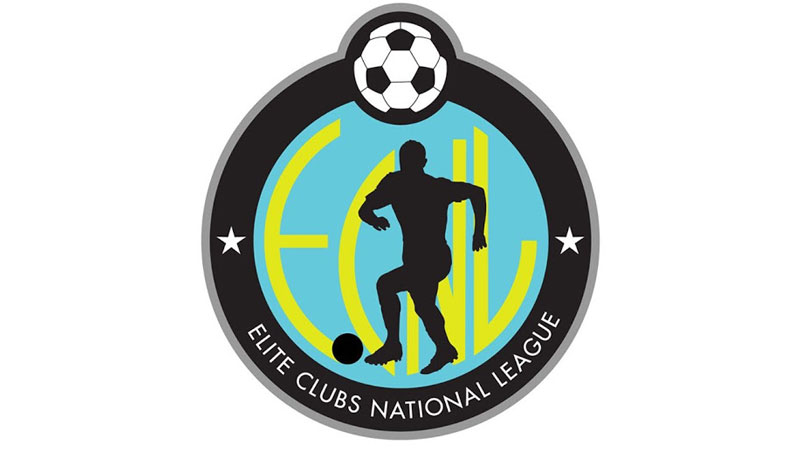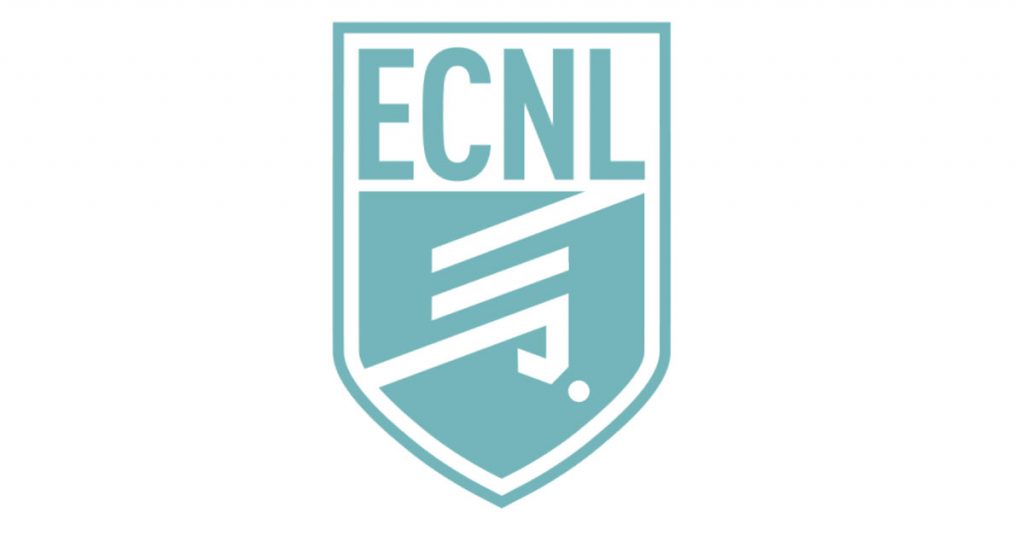Authority Soccer (authoritysoccer.com) is a participant in the Amazon Services LLC Associates Program, an affiliate advertising program designed to provide a means for sites to earn advertising fees by advertising and linking to Amazon.com. This site also participates in other affiliate programs and is compensated for referring traffic and business to them.
Since the beginning, soccer has evolved through the organization of different platforms and competitions. First, Association Football divided rugby from soccer.
Then, schools started competing with each other. Finally, workers created their own clubs, giving the final shape to soccer as we know it today.
It has been proved that organizing the game makes it grow, so the ECNL was created. But what is ECNL soccer?
ECNL soccer is a national youth soccer league for girls and boys under 14, 15, 16, 17, 18, and 19. Its mission is to develop youth players through innovative player-centered programs, creating opportunities to showcase their talents.
The ECNL Soccer league is committed to excellence and respect for diversity. Promoting players to the US Soccer’s National Team is their long-term goal.
In 2009, a presentation in Las Vegas invited almost 60 clubs to join the Elite Clubs National League, an ambitious project created to develop and enhance youth soccer players’ experience.
A few months later, over 2000 youth soccer players and 40 teams registered to participate ECNL showcase to qualify for the ECNL championship. Since then, the league hadn’t stopped growing.
What does ECNL soccer mean?
ECNL is the Elite Club National League’s initials, a non-profit organization created to benefit youth American soccer players from 14 to 19 years old.
The ECNL was initially thought of as an only girls organization, but now it is divided into ECNL Girls and ECNL Boys.
ECNL seeks to enhance youth players’ competitive level by creating tournaments involving the country’s best teams. These tournaments and competitions improve and facilitate the discovery of elite American youth soccer players.
The idea of the organization is to generate training and organization guidelines for every club enrolled in it. The participant teams are organized in conferences, and the matches include conference and cross-conference games.
The best teams qualify for a play-off and then to the finals, like in most American sports.
The ECNL is an excellent resource for players without a team or looking to change theirs. Right now, there are more than 120 teams registered for boys and more than 100 for girls.
It is US Soccer’s best interest that each game has both referees and scouts. The scouts are assigned by the US Soccer Talent Identification to evaluate and recommend players for the US Youth National Team.
Scouts are responsible for gathering information about players that could be part of the National Team, and, as they have an exceptional eye for talent, they can assess the players and the coaches on what qualities a player could work more or polish.
A successful ECNL player must gather six essential characteristics.

- Decision making – A player who is not continually looking at the ball in their feet is more likely to make better decisions during a game. To identify this, coaches observe how the players receive the ball; are they looking up or looking at the ball?
Players who spend more time looking at the field than the ball are more likely to develop a sense of decision-making more accurately. Those are the players that are known for having the field map in their heads all the time.
- Initiative – What is the player’s posture during the game? Players with initiative don’t wait for the ball to get to them. They move and try to find the best possible location in the field; they rotate positions with another teammate; they break the tactic rules, and so forth.
In soccer, sometimes, it is not about the chances created by the team but about the opportunities a player can make for themselves.
- Focus – Concentration is critical during a soccer game. Mostly when is a sport in which a player can spend several minutes without touching the ball. They can even spend some time without being involved in the game at all.
Focus and concentration in the game are vital because, after several minutes of not participating in the game, a pivotal play can demand an enormous effort. Soccer players must be ready to accelerate from 0 to 100 in a matter of seconds.
- Technical skill – The ability to handle the soccer ball is also crucial. Perhaps one of the most solicited attributes of a soccer player nowadays is ball control. Since the game is played faster than in the last 10 or 15 years, the way a player control a pass can seal that play’s fate.
Today’s soccer is played without pause. It demands high precision in the passing at a high velocity; that is why ball control is vital. There is no time for mistakes. The same applies to shooting at the goal.
Modern soccer is so physical and evenly matched that teams have little chance of facing the goalkeeper; players must have an excellent score technique.
- Physical conditions – As mentioned in the previous topic, soccer players’ fitness must be on point. The game nowadays demands massive physical efforts.
Games are played with intensity from the beginning to the end of each half. Strikers must defend, and defenders must join their team in the attack. This weathering cant’ be possible if the players are not physically prepared to face such a demand.
- Maturity – Young soccer players that demonstrate a high sense of responsibility and maturation are more likely to succeed in the sport. The life of a soccer player is full of restrictions and sacrifices. It requires discipline and commitment 365 days of the year.
Even when the team is not competing, the players must keep training on their own. Being responsible for their team’s function and embracing that responsibility is an excellent demonstration of character and commitment.
ECNL rules

For starters, there are no friendly games in ECNL. Every match has an impact on competition standings.
1. The ball
- Under 13 to under 18 players, it is used a professional standard n.5 ball.
- Under 11 and under 12 players use a size 4 soccer ball.
2. Time
- U11 and U12. Two 30 minutes halves.
- U13. Two 35 minutes halves.
- U14 to U16. Two 40 minutes halves.
- U17 to U19. Two 45 minutes halves.
3. Rosters
- Squads can have a maximum of 30 players registered.
- Each team must provide the officials a list with at least 18 players eligible to play the match.
Is ECNL better than DA?
Some people think that for a girl looking to succeed as a soccer player, the best option is ECNL, and for a boy, DA. The truth is that both organizations should not be seen as enemies but as allies.
As the ECNL has initially been created to give visibility to young female soccer players, and the Soccer Girls Development Academy (Girls DA) is relatively new, people assume that girls’ best option is the first one. But it is not like that.
Although both organizations have some differences. For instance, in DA, players are not allowed to participate in high school soccer games; in ECNL, they can compete if they want to.
The most significant difference between them is perhaps in some rules. In ECNL, teams have the right to one re-entry per half. In Da no, substituted players can’t go back to the field; they play with FIFA rules.
ECNL has 2 mandated practices per week, DA four. ECNL doesn’t record its matches; in DA, every game is recorded and uploaded into Hudl.
Another significant difference is in training. Soccer clubs that decide to join DA must meet a specific training schedule, with an established number of hours per week and a determined training field size.
ECNL is more flexible; they decide not to interfere much in how each club chooses to work with their players.
The distinctive characteristic of ECNL is its code of conduct that demands specific details from the participant clubs.
A club hosting a game for ECNL must provide water and Gatorade jugs for both teams. They must also offer benches for both coaches, their team, and substitute players. The referee and the rest of the officials must be certified professional referees.
It is vital for young players to feel they are part of well-organized and competitive environments. That cultivates the feeling of belonging to something bigger than them and prepares them for the first division and other professional games.
The prohibition for DA players to participate in high school teams puts some parents on the spot.
At the end of the day, they ask themselves if a professional approach to the game without space for having fun with their school colleagues is the right choice.
For those thinking about making a profession out of soccer, perhaps staying on DA is a better choice since their relationship with soccer will be purely professional.
ECNL offers both options. Players can focus on keeping their competitive level at the top, and they also can stay in touch with their friends and play soccer just for fun.
If ECNL and DA are seen as rivals, the only ones who will lose will be the players. Both the players and the parents must see them as different paths towards the same goal.
The diversity of possibilities should multiply the chances of kids getting involved in the game, not diminishing them.
What does pre-Ecnl mean?

The pre-ECNL program is destined for kids from 10 to 12 years old to prepare them for the ECNL and elite tournaments.
The program educates the players’ families as well, offering a top-quality platform to young players. In ECNL, they know that developing and enhancing a players’ abilities from a young age is crucial to be more prepared for the future.
The idea is to stimulate young players to compete and play to the highest level against and with their generation’s best players.
How many teams are in the ECNL?
When the 2020/2021 season was announced, the ECNL had 113 girl clubs and 131 boy soccer clubs registered.
The current season is the first time boy clubs surpass girls clubs. In August of 2019, the organization had 94 girl clubs and 90 boys clubs listed.
Also, in August 2019, the girls ECNL announced the start of the Regional League. The boys Regional League was announced this year.
Can ECNL players play high school soccer?
As we mentioned above, ECNL allows players registered on ECNL clubs to participate in any non-ECNL game.
ECNL creates its schedules with high school soccer plans in mind to avoid interfering with each other.
Can ECNL players play ODP?
The ODP, also known as the US Youth Soccer Olympic Development Program, is a national and development program for talented players. The program identifies and improves youth players to steward their state association, region, or even the United States in a soccer match.
The ODP organizes its teams at a regional level with the best players, separated by age groups.
ECNL soccer won’t interfere if a player is called to participate in the USYS ODP. Any player can play in ODP; the choice is entirely up to them, not the ECNL. ECNL gives the players total freedom to choose what they think is best for them.
Can ECNL teams play in State Cup?
Yes, any team registered in the ECNL can participate in their local, regional, and state leagues. They can also participate in national championships, the USYS State, and the Regional Cup.
Although no rule prohibits teams from participating in the State Cup, it becomes difficult for ENCL players to join Regional, National Championships, and State Cup games; there are just too many games.
How much does ECNL soccer cost?
The money spent by a family with at least one kid in ECNL varies from $5,000 and $10,000 a year. The bill goes high as participating in the tournaments requires traveling virtually from coast to coast.
The issue raises the discussion about what kind of families can offer their kids the possibility of participating in sports outside the school. Research indicates that most US players come from families with an income superior to $100,000 a year.
It is different in countries like Argentina and Brazil, where soccer is the working class’s sport. In the US so far, soccer is an elite sport.
The negative impact is double because teams can’t enjoy the talent from lower-class people, and kids from less fortunate neighborhoods don’t see themselves reflected in the elite players. Therefore, they have less interest in playing soccer.
Do ECNL players earn money?
No, ECNL players don’t receive money for participating in the tournaments.
What is the ECRL Soccer League?

The ECRL soccer league is the regional version of the ECNL. This means that the teams participating in it only face teams within their region. These teams travel short distances in general.
The idea behind the creation of an ECRL league is to offer ECNL competition level to those team members who can’t travel as much as the ECNL requires.
Is ECNL worth it?
After investing tons of money and basically limiting their social circle into soccer-related friendships, families start asking the question, is it worth it?
And when they know not every kid participating in a club’s youth team will make it to that team’s first team or to the US National Team, the voice in their heads asking that question sounds louder.
As a matter of fact, most kids won’t make it nor the National Team or to the first team of their clubs.
They start asking themselves if the prize at the end of the road (if there is any) is worth the sacrifice and the things they are forced to leave behind.
The ideal scenario is one where the player decides by themselves whether the sacrifice is worth it. Also, following the perfect scenario narrative, they must decide if they want to try and be in the first division level soccer before they are 16 years old.
Some players succeeded, having started at 20 years old, but they are the exceptions.
By that age, it is recommended they give up on any other sport they are interested in and dedicate all their time to soccer. That is perhaps one of the most challenging parts since a kid who likes sports usually likes more than one.
The trick is that soccer requires a particular group of muscles to be on point, and practicing other sports can produce injuries.
For instance, people that participate in long marathons and half marathons are more likely to suffer muscular injuries during a soccer game.
After accepting the sacrifice involved in the decision to play professional soccer, things might look easier.
Being part of ECNL means they will face the better players of the country. For those who like challenges, this can be motivating enough. The possibility of testing their abilities against the best and beating them is the competitive people’s dream.
For every professional soccer player, being part of the National Team is the most significant honor and achievement of their careers. Still, if that call never happens, being a professional soccer player is quite an achievement by itself.
Many successful players never participated in their national teams, and they still managed to make excellent careers.

